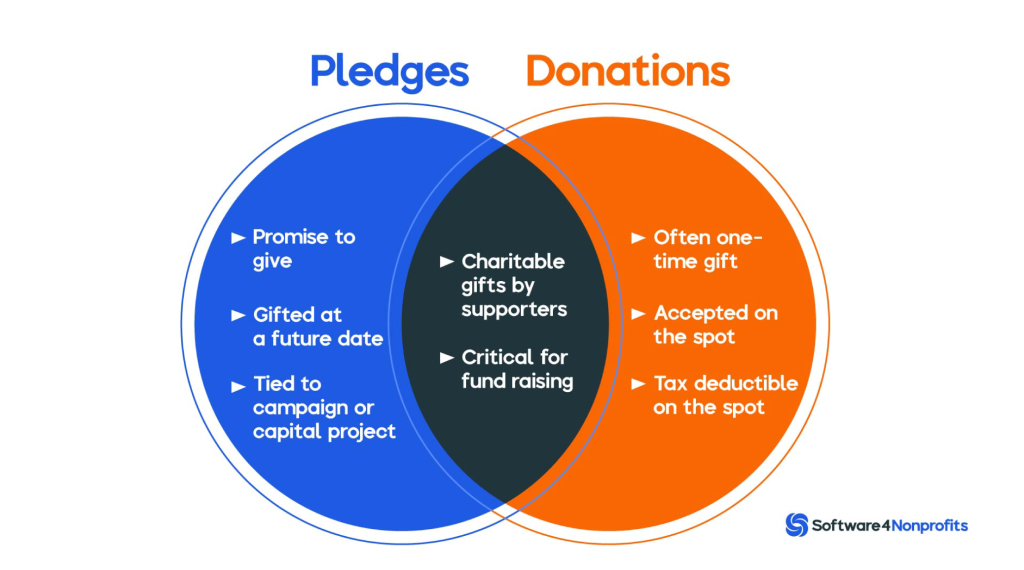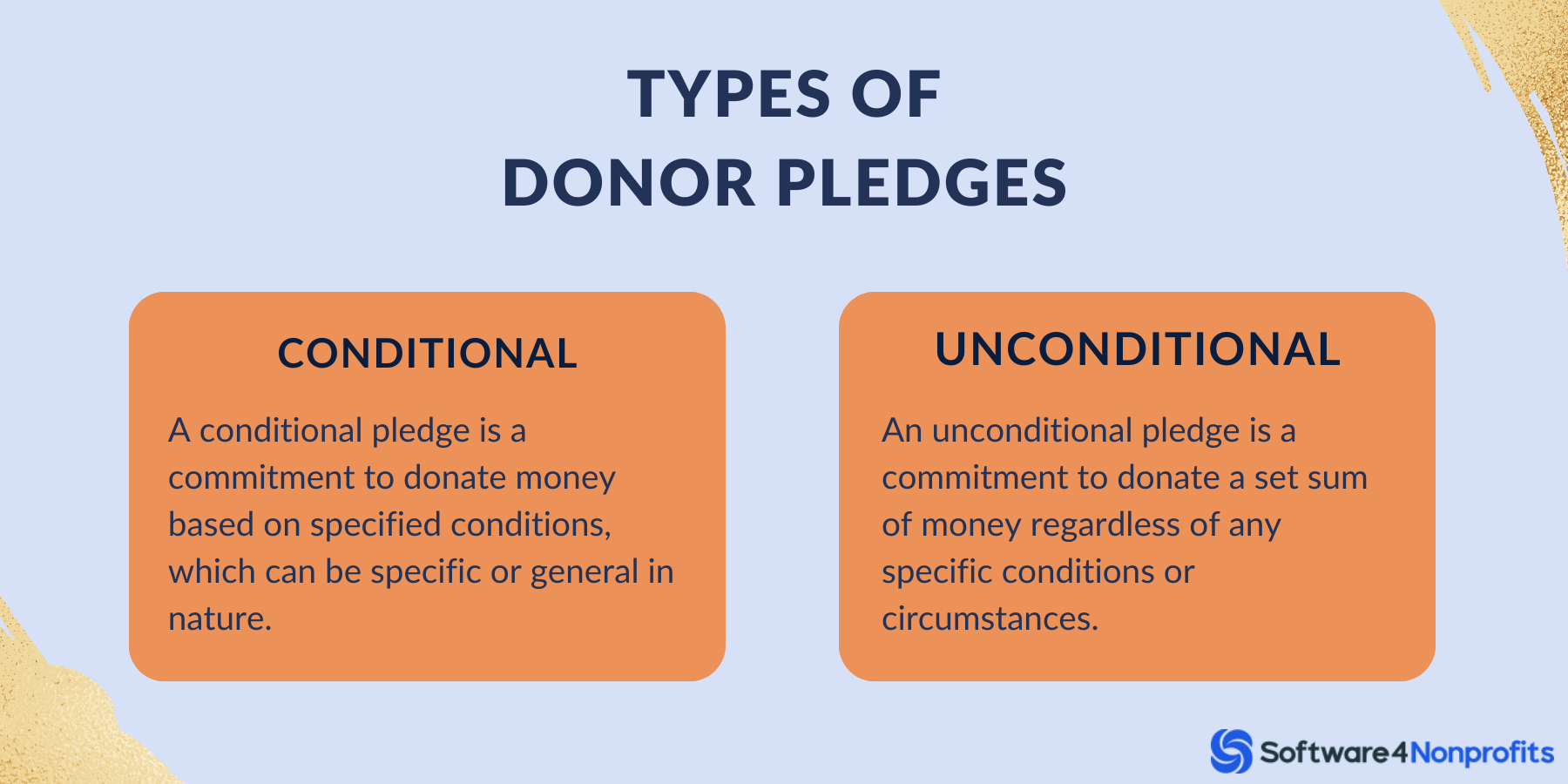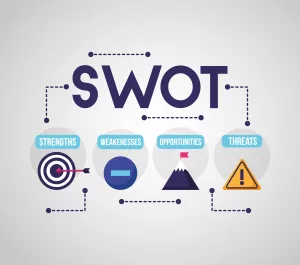Donating and pledging are both popular ways to contribute to charitable causes, but the terms are often used interchangeably, leading to confusion. While both involve giving money or resources to a cause, they have distinct differences that are important to understand. We’ll explore the key difference between pledge vs donate, and provide insights into which method might be the best fit for your needs.
What is a Donation?
Donations are gifts of money or property given to a charitable organization or individual for a specific charitable purpose. Donations are usually made to make a positive impact without any expectation of anything in return. They can be made in many forms, including cash, stock donation, checks, credit card payments, and gifts of property or securities. It can also be a one-time donation or a recurring gift made over time.
The most important characteristic of a donation is that it is an irrevocable gift. Once the donor makes a donation, they have given up any legal rights to that money or property. The charitable organization that receives the donation can use it in any way that furthers its charitable purposes, without any further obligation to the donor. Donors may receive a tax deduction for their donation, depending on the laws in their jurisdiction.
What is a Pledge?
In contrast, pledges are promises to give money to a charitable organization or individual at a future date. Pledges are often used to support fundraising campaigns or capital projects, such as building renovations or new construction. Pledges can be made in many forms, including verbal commitments, written agreements, or online pledges.
The most important characteristic of a pledge is that it is a promise to give, rather than an actual gift. A pledge creates a legal obligation on the part of the donor to fulfill their promise to give the specified amount of money at the specified time. If the donor fails to fulfill their pledge, the charitable organization may have legal recourse to recover the pledged amount.
Difference Between Donations and Pledges

Purpose
Donations are usually made to support a specific charitable cause, such as providing aid to disaster victims or funding medical research. They are often one-time gifts made in response to a particular event or appeal. Donations can also be ongoing gifts, made regularly, to support the ongoing operations of a charitable organization.
Pledges, on the other hand, are often used to support fundraising campaigns or capital projects that require a significant amount of money to be raised over a period of months or years. Pledges are usually made over a period of time, with the donor making regular payments or recurring donations towards the total pledge amount.
Tax Implications
Another big difference between the two is tax implications. Donors may receive a tax deduction for their donation, depending on the laws in their jurisdiction. In most cases, the donor must provide proof of the donation in the form of a receipt or other documentation. The amount of the tax deduction will vary depending on the jurisdiction and the donor’s tax bracket. For this purpose, the DONATION program by Software4Nonprofits is a highly effective and affordable solution for non-profit organizations that need to track donations and issue charitable receipts to their donors.
Pledges, however, do not usually qualify for a tax deduction until they are fulfilled. Once the donor has made the final payment on their pledge, they may be eligible for a tax deduction for the total amount of the pledge.
Legal Obligations
Once a donation is made, the charitable organization has no further obligation to the donor. The organization can use the donation in any way that furthers its charitable purposes, without any further obligation to the donor. The donor has no legal recourse to recover the donated amount, and the donation is considered an irrevocable gift.
With a pledge, however, the charitable organization may have legal recourse to recover the pledged amount if the donor fails to fulfill their promise to give. A pledge creates a legal obligation on the part of the donor to fulfill their promise to give at the specified time. If the donor fails to do so, the charitable organization may have the right.
Conditional and Unconditional Pledges
Conditional and unconditional pledges are two types of promises made by individuals or organizations to donate money or other resources to a charitable cause or organization. Let’s look at these two distinct types of pledges.

Unconditional Pledge
An unconditional pledge is a commitment to donate a specific amount of money, without any strings attached. In other words, the donor is pledging to give the money regardless of any specific conditions or circumstances.
Conditional Pledge
A conditional pledge, on the other hand, is a commitment to donate a specific amount of money under certain conditions. These conditions can be specific or general, and they may relate to the use of the funds, the timing of the donation, or other factors.
Strategies for a Successful Pledge Campaign
Receiving donation pledges is vital for fundraising for various organizations and causes. Luckily, there are multiple methods to receive these pledges, such as utilizing pledge cards or setting up a donation page. Let’s explore some of the most successful approaches for receiving donation pledges.
Pledge Cards
One of the most common methods of receiving donation pledges is by using pledge cards. These cards are typically distributed to event participants or mailed out as part of a fundraising campaign. Pledge cards typically include the following information:
- Name of the organization or cause
- Purpose of the fundraising campaign
- Donation amounts and frequency (e.g., one-time, monthly, annual)
- Contact information for the organization or cause
- Instructions on how to submit the pledge card
When using pledge cards, it’s important to make it easy for donors to fill them out and return them. Including a self-addressed stamped envelope can be helpful, as well as instructions on how to return the card via mail or email.
Donation Page
In today’s digital age, many nonprofit organizations and causes use a donation page with a fundraising thermometer on their website to receive donation pledges. A donation page typically includes the following information:
- Name of the organization or cause
- Purpose of the fundraising campaign
- Pledge amounts and frequency (e.g., one-time, monthly, annual)
- Secure payment processing options
- Contact information for the organization or cause
When setting up a donation page, it’s important to make it user-friendly and easy to navigate. The donation forms should also be optimized for mobile devices, as many donors use their smartphones to make donations. The best practice is to maintain mailing lists to kick-start future pledge fundraisers.
Phone Calls
Another effective way to receive donation pledges from old or new donors is through phone calls. This method is especially useful for reaching out to potential donors who may not have attended events or received pledge cards. Personalizing phone calls can provide an opportunity to answer any questions donors may have. As it also provides an opportunity to explain the fundraising goals or note any pledge conditions by the donors.
When making phone calls to receive donation pledges, it’s important to have a script prepared and to be respectful of the donor’s time. It’s also important to follow up with donors after the call to provide any additional information or to thank them for their support.
Social Media
Social media platforms can also be effective for receiving pledge donations. Many organizations and causes use social media to promote their fundraising campaigns. This way, they encourage followers to make pledges to speed up their donation process. Social media platforms like Facebook and Twitter also offer options for accepting donations directly through their platforms.
When using social media to receive donation pledges, it’s important to use engaging and compelling content to attract donors. It’s also important to provide clear instructions on how to make a donation pledge and to respond to any questions or comments from potential donors.
Donate Life America launched an Instagram campaign to raise awareness about the importance of heart donation. The organization created a video post that encouraged followers to become registered organ donors and share their commitment to this cause on social media.
The campaign showcased personal stories of individuals who experienced positive impacts from heart donations in their lives. The video highlighted the courage of the donors and the gratitude of the recipients, emphasizing the transformative power of organ donation. The use of real-life stories and relatable experiences made the campaign more relatable and effective in encouraging people to sign up as donors.
How to Effectively Track Pledges
Keeping track of pledges is an important aspect of running a successful pledge campaign. It helps to ensure that donors fulfill their commitments and that the organization has a clear understanding of its financial commitments and resources.
Here are some tips on how to keep track of pledges:
- Create a Pledge Tracking System: Establish a system for tracking pledges, whether it’s a spreadsheet or a specialized pledge software program. Ensure that it includes all the necessary information. Including the donor’s name, contact information, pledge amount, payment schedule, and payment status. For effective tracking, record all the information in the donation pledge forms.
- Monitor Progress: Regularly monitor the progress of your pledge drive to ensure that you’re on track to meet your goals. Use your tracking system or donation software to monitor pledge payments. Also, follow up with donors who have missed payments or are at risk of missing payments.
- Send Reminders: Send reminders to donors about upcoming pledge payments, preferably a few weeks in advance, to give them time to prepare. Use a variety of communication channels, such as email, phone calls, or direct mail, to reach donors.
- Thank Donors: Remember to thank donors for their pledges and keep them updated on the progress of the campaign. Regular communication can help donors feel engaged and motivated to fulfill their commitments.
- Follow Up: Follow up with the donor if they miss a payment to find out if there is an issue that needs to be addressed. It’s important to follow up promptly and respectfully to avoid potential misunderstandings or lost pledges.
By implementing these strategies and by using the right tools, you can establish a clear system for tracking pledges and ensure that your fundraising campaign runs smoothly. Remember to stay organized and communicate regularly with donors. Also, follow up promptly to maintain strong relationships and fulfill your financial commitments.
Conclusion
Understanding the differences between donations and pledges is essential for donors and charitable organizations alike. Each method has its unique purpose, tax implications, and legal obligations, which should be considered before making a decision. By making informed decisions and working together, we can all make a positive impact on our communities and the world at large.



